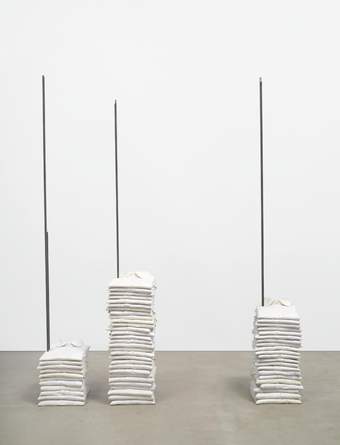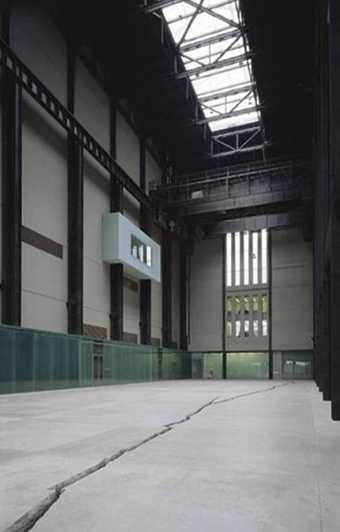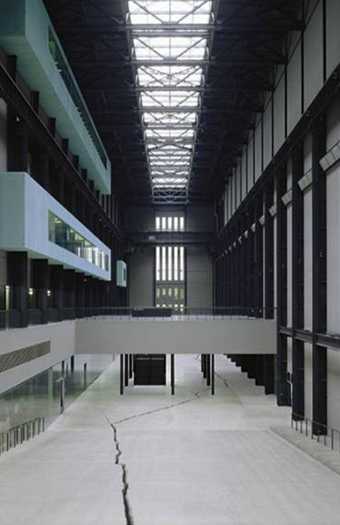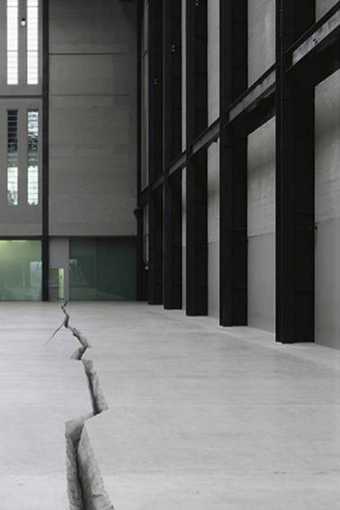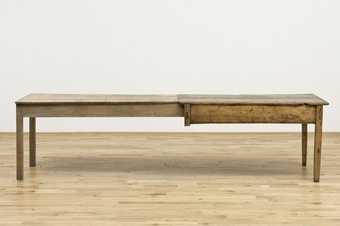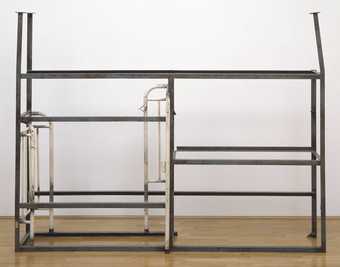Doris Salcedo: Shibboleth is a piece that refers to dangers at crossing borders or to being rejected in the moment of crossing borders. So I am making a piece about people who have been exposed to extreme experience of racial hatred and subjected to inhuman conditions in the first world. This piece is trying to introduce into the Turbine Hall another perspective, and the idea is that we all look down and maybe try to encounter the experience of these people that I have been referring to somewhere herein within this deep division that has been generated in the Turbine Hall. The presence of the immigrant is always unwelcome. The presence of the immigrant is seen as jeopardising the culture of Europe. Europe has been seen as a homogonous society, a democratic society that has learned, through centuries of development, has learned to resolve the issues through dialogue. And if that is the case then where do we place these outbreaks of racial hatred? So I think that society is not so homogonous and is not so democratic and there is some people that are experiencing that. So wherever the world the earth opened… in the first world there is mesh keeping people out or inside as you want to see it, anyway keeping people away so it’s a piece that is both in the epicentre of catastrophe and at the same time it is outside catastrophe. As you look in you can get the feeling of catastrophe in there but nonetheless outside is quite subtle and I wanted a piece that intrudes in the space, that it is unwelcome like an immigrant that just intrudes without permission, just gets in slowly and all of a sudden it’s there and it’s a fairly big presence. I believe every work of art is political because every work of art is breaking new ground and it’s in a way against the status quo so every work of art and the nature of art is political. Abstract art, all of it, is political from my point of view. My work is… because of where I come from, because I come from a country that is in the middle of a conflict, very intense war, and I have always seen conflict and I have always seen the world from the other perspective, from the perspective of the defeated people not from the perspective of the triumph. It is not…I don’t see this piece as an attack, I just think that it is a reminder. I want to bring into the consensus of ‘everything is well, we are all happy’, I want to bring a question mark, a disruption. Not only in the space but also in time, what is it before and what is going to happen after? There is a quote by a philosopher Theodor Adorno that I find amazing, he says that we should all see the world from the perspective of the victim, like Jewish people that were killed with their head down in the Middle Ages, so he wonders what is the perspective of the person that is agonising in this position. So I just wanted to get that perspective. Is the world upside down? What it is like to see the world from down there. So once the show is over there will be… the piece will be sealed, the piece will remain under the floor and it will be sealed so a permanent scar will always be [in] the Turbine Hall as a memory, as a commemoration of all this life that we don’t recognise, for us are like ghosts anyway. So in that way, that the memory of the piece and the presence of the people that we don’t want to look at, the presence of this life that we don’t want to acknowledge, pretty much has the same character, just a vague memory.

